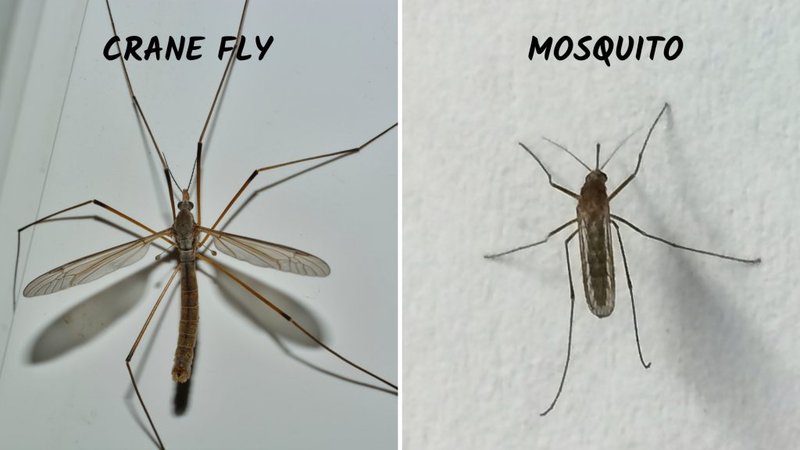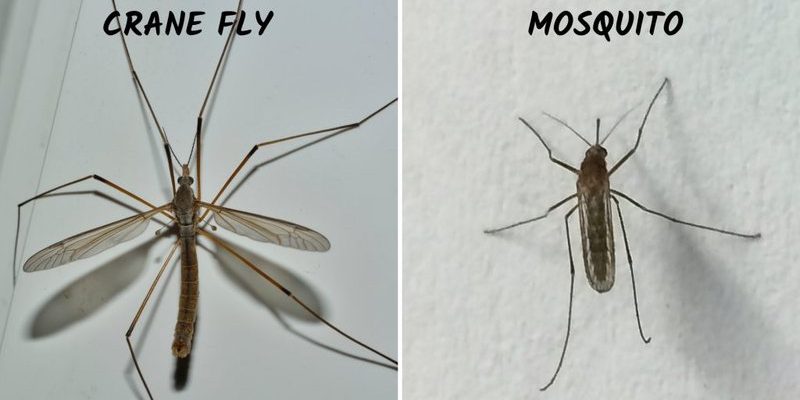
Let’s dive into the world of mosquitoes and see how they stack up against similar insects like flies, gnats, and midges. Understanding these differences can help us appreciate the role these insects play in our ecosystem, even if they sometimes feel more like pests. So, grab your favorite drink as we explore the buzzing universe of these winged critters.
What Are Mosquitoes?
Mosquitoes are small, flying insects belonging to the Culicidae family. These pesky bugs have been around for millions of years and are known for their slender bodies and long legs. If you’ve ever felt that itchy bite, you’ve probably encountered a female mosquito. They’re the ones that draw blood, which they need for egg production. It’s a bit like they’re having a snack while preparing for dinner guests!
Interestingly, male mosquitoes don’t bite at all. Instead, they feed on nectar and plant juices. This distinction is pretty important, especially when you think about how mosquitoes are often blamed for the havoc they cause. They may be annoying, but they’re also vital for some ecosystems, acting as food for birds, bats, and other predators.
Comparing Mosquitoes to Flies
Now, how do mosquitoes compare to houseflies? Both are flying insects, but they belong to different families—mosquitoes to Culicidae and flies to Muscidae. While mosquitoes are more slender and have longer legs, flies are typically bulkier and have shorter legs. You might say mosquitoes are the athletes of the insect world, while houseflies are more like your couch potato friend!
Both insects can be quite the nuisance, especially in homes. Flies are known for their rapid movements and ability to land on almost any surface. They have large, compound eyes that give them a wide field of vision. Mosquitoes, on the other hand, are more focused in their approach, usually drawn to carbon dioxide that mammals exhale.
When it comes to reproduction, houseflies lay their eggs in decaying food or waste, whereas mosquitoes prefer standing water for their eggs. This means if you’re planning a backyard gathering, it’s essential to eliminate standing water to keep those pesky mosquitoes at bay!
Gnats: The Tiny Titans
Gnats are another family of insects that often buzz around you, but they’re much smaller than mosquitoes. They belong to several families, including Mycetophilidae, which are known as fungus gnats, and Sciaridae. Despite their size, gnats can be just as pesky, particularly when they swarm.
One key difference is their habitat. While mosquitoes thrive near water, gnats prefer damp, decaying organic material. Here’s a little story: picture a cozy garden, flourishing with plants. If you’ve ever seen gnats hovering near your potted plants, it’s likely because they’re feasting on the soil’s organic matter, not as much because they’re hunting for blood!
Both insects can reproduce quickly, but gnats tend to have shorter life cycles. This means one or two can quickly become a swarm. So, you might find them buzzing around your berries or fruits, unlike mosquitoes that are more inclined to look for a meal in your blood.
Midges: Mosquitoes’ Even Smaller Cousins
Midges are another insect that draws comparisons to mosquitoes, but they’re generally smaller and often less bothersome. They belong to several families within the order Diptera and can be found near bodies of fresh water. Midges look somewhat like mosquitoes but lack the long, slender bodies. Their wings are shorter and broader, giving them a different flight style.
Interestingly, midges can also bite, but they’re not nearly as notorious as mosquitoes. The females require a blood meal for their eggs, but their bites are often less painful. You might say that while mosquitoes are the aggressive bullies of the insect world, midges are more like the timid kids in the back of the class.
One famous group of midges, the “non-biting midges,” are harmless and even help in pollination. They’re often mistaken for mosquitoes, which can lead to unnecessary panic. Knowing the differences can help you appreciate these little guys instead of swatting them away.
Why Understanding These Insects Matters
You might be wondering why we should care about comparing mosquitoes to similar insects. Well, understanding these distinctions can help us control their populations and protect ourselves from diseases that mosquitoes can carry, like West Nile Virus or Zika.
Additionally, knowing their habitats and behaviors can help you enjoy outdoor spaces more. By managing standing water for mosquitoes and understanding seasonal patterns of gnats and midges, you can take proactive steps to minimize encounters.
Consider this: instead of just reaching for bug spray, you might think about planting certain flowers that repel mosquitoes, like marigolds. It’s a win-win; you keep those pests away and create a beautiful garden!
Protecting Yourself from Mosquitoes and Their Friends
Now that you know how to identify and compare these insects, what can you do to protect yourself? Here are some straightforward tips:
- Eliminate standing water: This is a game changer for controlling mosquito populations. Check your yard for puddles, buckets, or clogged gutters.
- Use insect repellent: Choose products that contain DEET or natural alternatives like citronella oil. They can help keep both mosquitoes and gnats at bay.
- Wear protective clothing: If you’re venturing into areas with a lot of insects, put on long sleeves and pants to reduce exposed skin.
- Create a barrier: Installing screens on windows and porches can help keep insects outside while you enjoy your space indoors.
When it comes to comparing mosquitoes and other similar insects, the differences and similarities are more significant than you might think. Mosquitoes, with their persistent bites, might steal the show, but flies, gnats, and midges each play their unique roles in the ecosystem.
By understanding these creatures better, not only can you manage pesky encounters, but you can also learn to appreciate their importance in nature. So next time you hear that familiar buzz, remember—the little insect world is more than just an annoyance; it’s a complex and fascinating part of our environment. Cheers to that!

